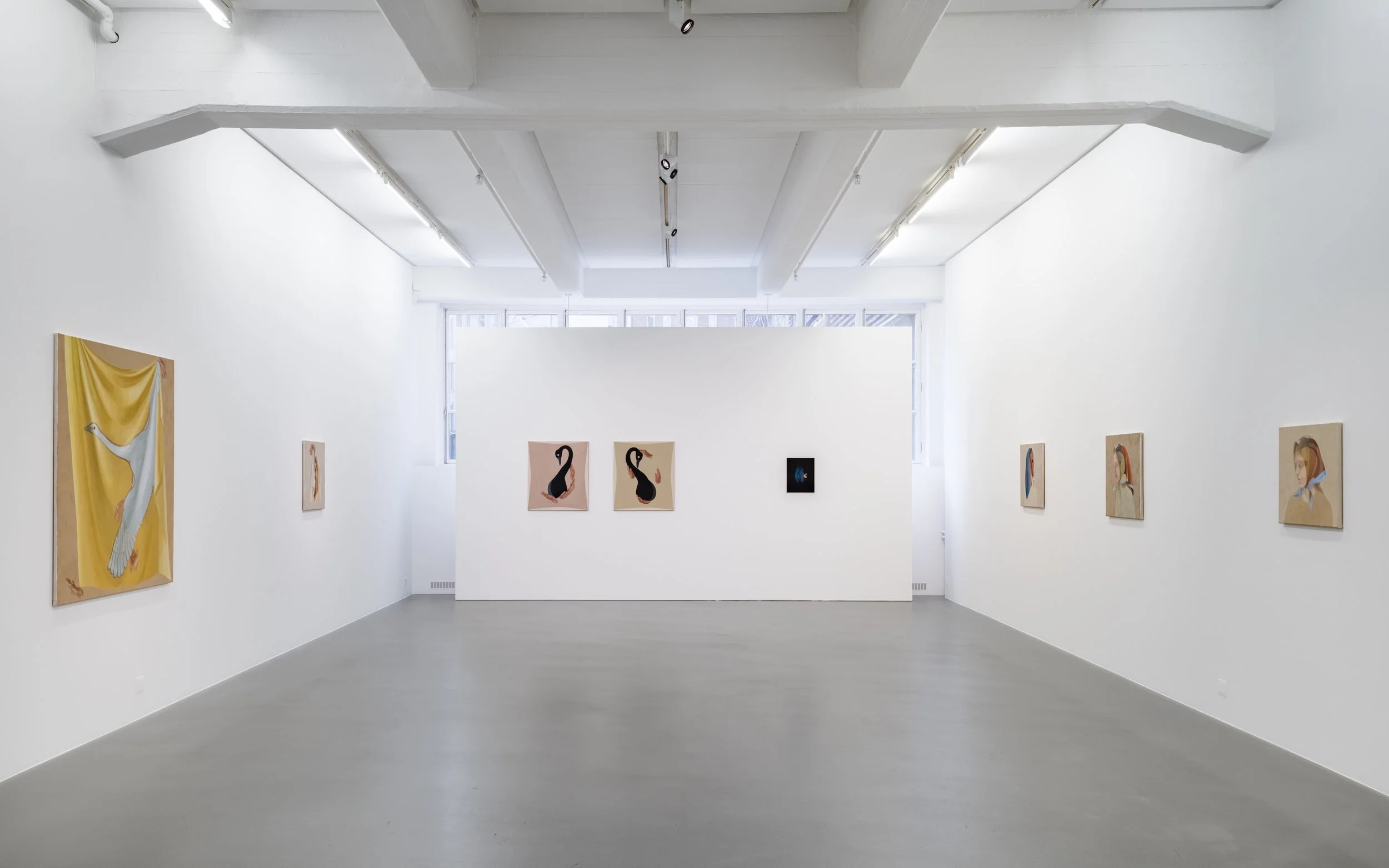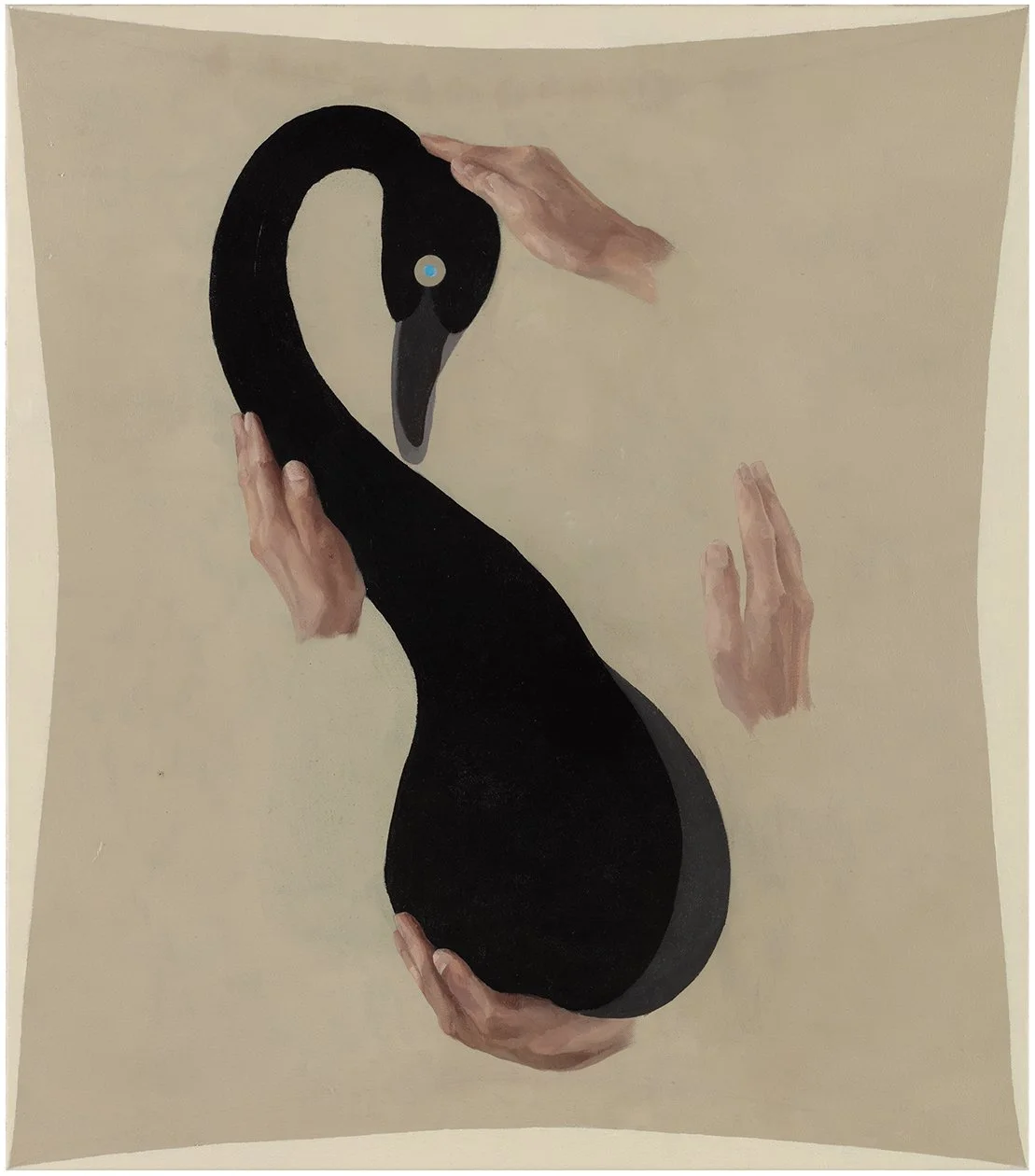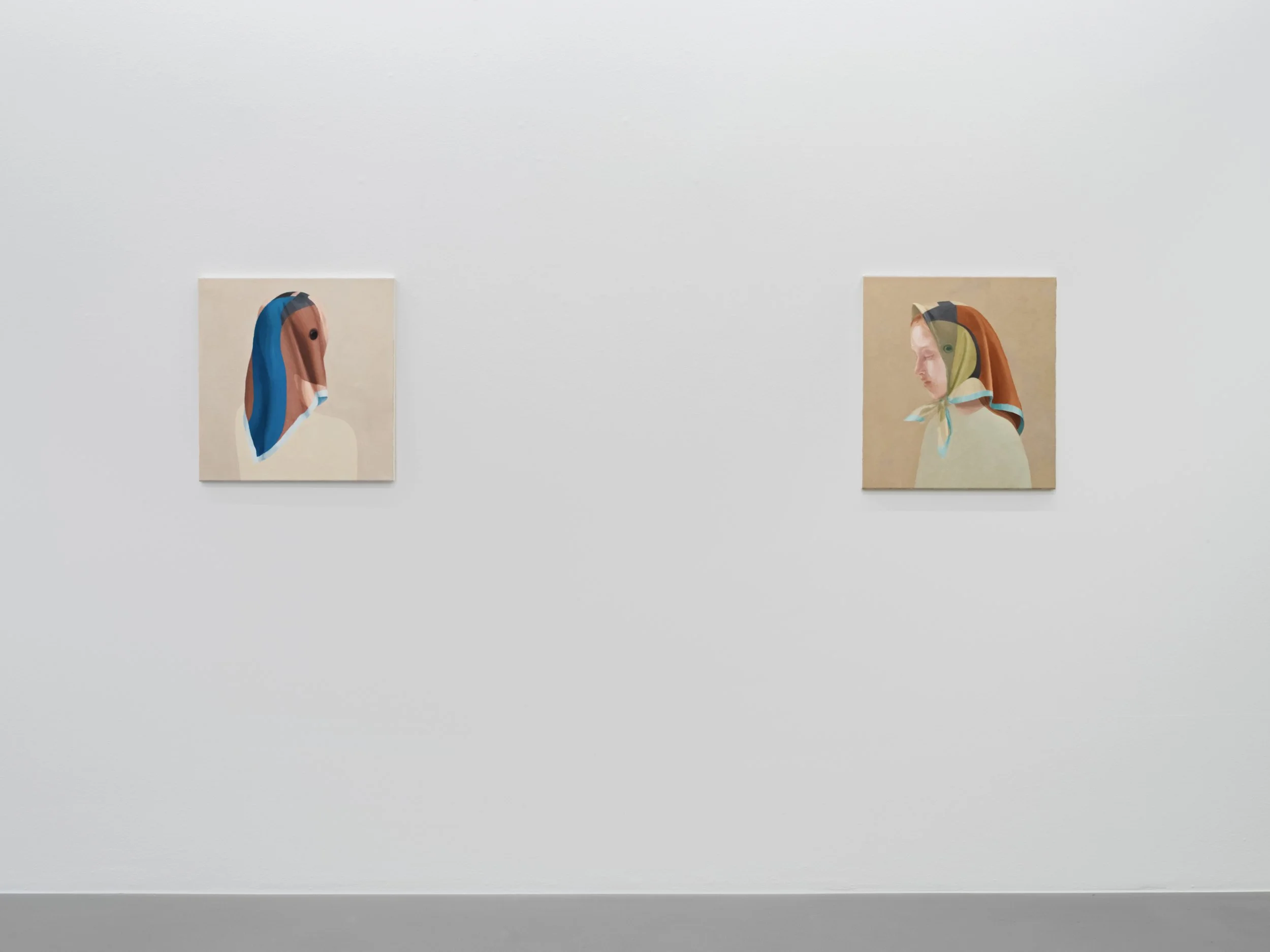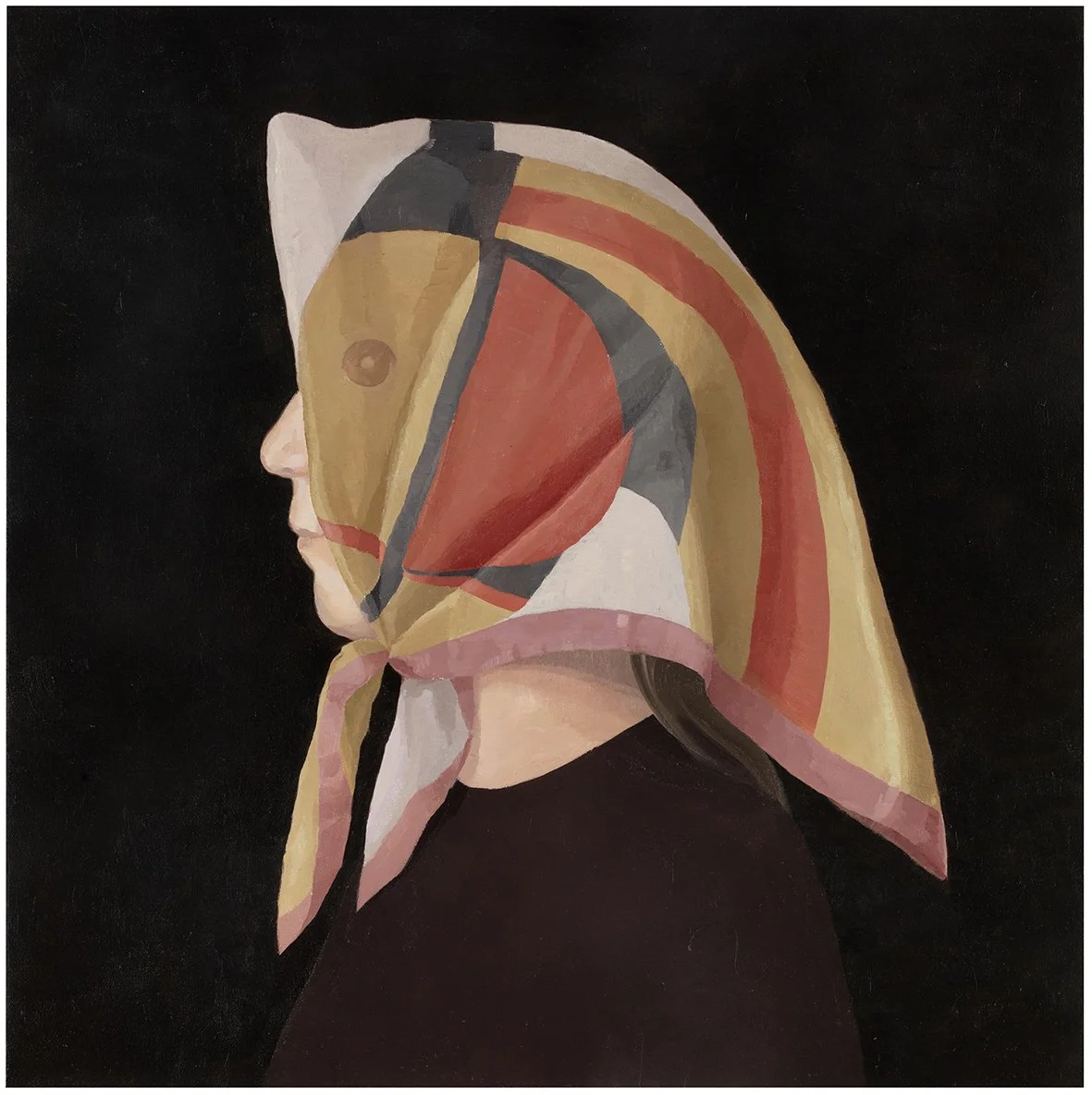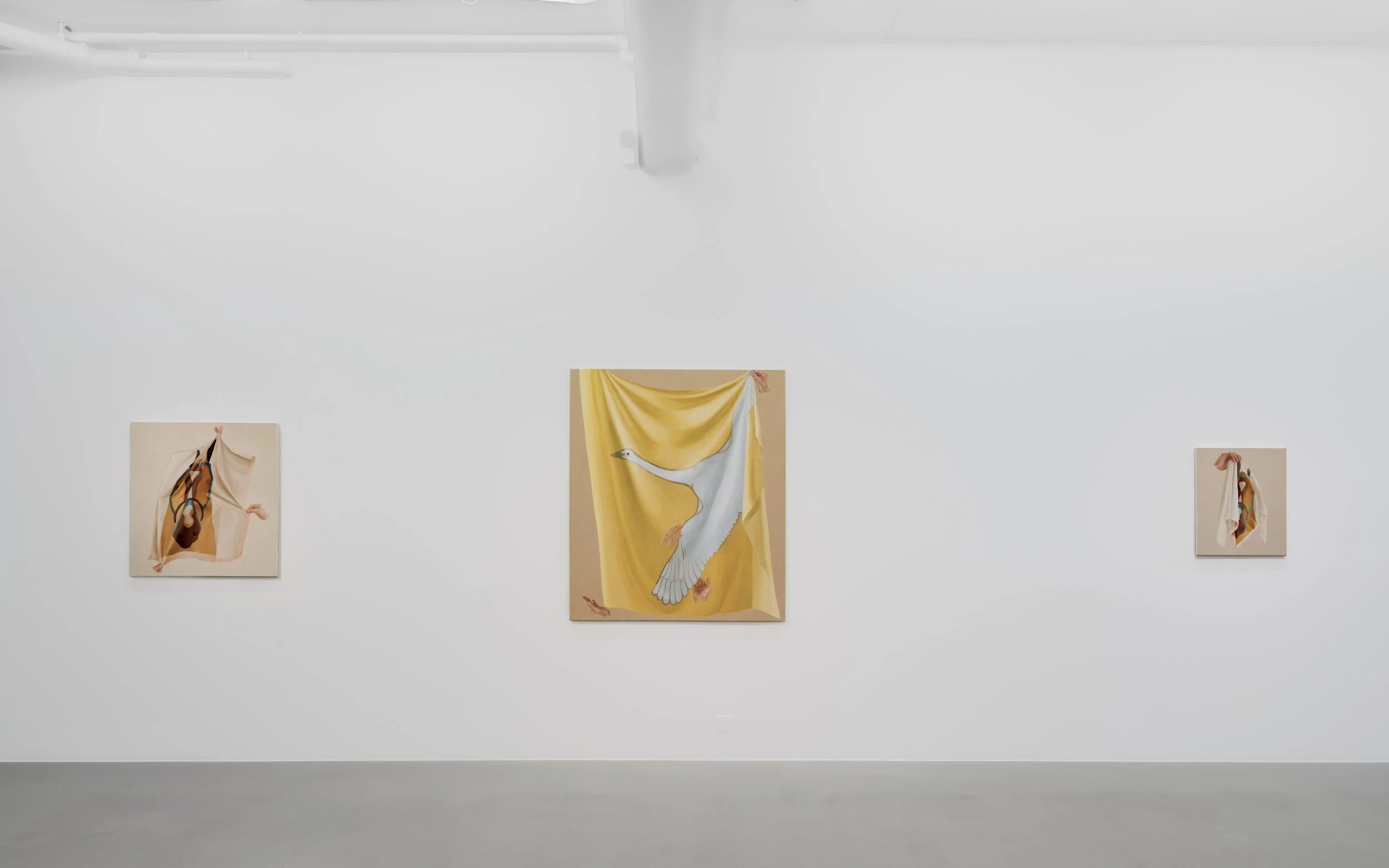Be With Me, 2.10.-31.10.2025 Cecilia Hillström Gallery, Stockholm
THE ART OF PICTORIAL THINKING
Art is not about art.
Art is about life.
Louise Bourgeois
The first encounter with a work of art sparks a surreptitious spontaneous interpretation on every experiential level. We are affected even before we’ve identified motif, colours, techniques or materials. What happens between image and viewer on this first perception? What does the image do to us? Amuse or disturb? Console? Annoy? Enthral? Or – in the worst case – does it leave us cold?
Päivi Takala’s paintings ignite a visual curiosity at once. Both the soft hues and the intense blackness have the allure of a stoically restrained visual voice. There is nothing laboured in these precise, airy works that rest securely in their own reality. An artistic power has been mobilised here.
Our eyes move on. Shapes, objects and figures start to emerge. A portrait in profile. A horse’s head. The silhouette of a black swan. … The longer we study the pictures, the more secretive they seem. The familiar grows increasingly strange the closer we scrutinise it. As if each painting were a riddle.
Takala’s imagery is figurative and ostensibly realistic in these paintings. Soon, however, we notice that something is not right. Tiny, almost humorous warps remind us that a picture is a picture and thus an illusion, an interpretation and a filter on reality.
The primary motifs that Takala has explored recently – horses and swans – are symbol-laden and rooted in history. People have depicted animals since time immemorial. The deeper religious and aesthetic significances of animals to those who created the first cave paintings have been lost to us, however. Takala instead draws our attention to the paradoxical fact that we in the West often approach animals and nature through depictions, logotypes and trademarks that sometimes gain cult status.
But Takala’s paintings are neither social critiques nor condemnations of various kinds of luxury consumerism. They are not moral reflections but suggest a contemplative dimension. The paintings are visual ruminations on the world and visual culture created by mankind.
The Western art historic legacy is always present in Päivi Takala’s works. Still, she finds her own path in everything she does. The exquisite beige tones of her palette are directly linked to one of the most iconic horses in art history – Whistlejacket, unmounted and magnificently portrayed in actual size by George Stubbs around 1762. Stubbs was famous for his masterly horse paintings and innovative use of solid monochrome backgrounds.
When the horse or swan print on a scarf merges with a human profile, something surrealistic emerges in Takala’s paintings. René Magritte, the father of the quirky visual paradox, would have smiled knowingly at the sight.
The disembodied hands that appear as if from nowhere in her paintings to hold, caress or point at something, add a surrealist element. This fragmentation, however, does not feel like some kind of dissolution. The playful dialogue with art history harks back to the Early Renaissance, Fra Angelico and his frescoes. In her own way, Takala alludes to their clarity and uniform treatment of perspective, colour and light.
But Päivi Takala does not seek to develop new painterly effects. For her, the creative process is equally aesthetic and intellectual. The simplest way to put this is perhaps that her images arose from a sense of wonder. They are both casual and strict at the same time, while their stylised imagery is bound by its own logic. Shapes are reduced. The sophisticated frugality means that every brush stroke, nuance and line is precisely what is needed just there. It is not reality that is portrayed, but thoughts about it. Painting is Päivi Takala’s tool for reflecting on and approaching the existential character of the world.
Joanna Persman
Päivi Takala. Be With Me, 2.10.-31.10. 2025, Cecilia Hillström Gallery, Stockholm
photo: Jean-Baptiste Béranger
Guide Me II, 2025, 80 x 70 cm, oil on canvas
photo: Jussi Tiainen
Guide Me I, 2025, 80 x 70 cm, oil on canvas
photo: Jussi Tiainen
Yours, 2025, 60 x 55 cm, oil on canvas
Companion, 2025, 57 x 55 cm, oil on canvas
photo: Jussi Tiainen
Päivi Takala Be With Me, 2.10.-31.10. 2025, Cecilia Hillström Gallery, Stockholm
photo: Jean-Baptiste Béranger
On Your Side, 2025, 60 x 60 cm, oil on canvas
photo: Jussi Tiainen
Päivi Takala Be With Me, 2.10.-31.10. 2025, Cecilia Hillström Gallery, Stockholm
photo: Jean-Baptiste Béranger
So Soft I, 2025, 40 x 32 cm, oil on canvas
photo: Jussi Tiainen
So Soft II, 2025, 40 x 32 cm, oil on canvas
photo: Jussi Tiainen
So Soft III, 2025, 40 x 32 cm, oil on canvas
photo: Jussi Tiainen
Hold me close, 2025, 80 x 70 cm, oil on canvas
photo: Jussi Tiainen
I Got It, 2025, 60 x 50cm, oil on canvas
photo: Jussi Tiainen
Oh My Horse, 2025, 85 x 80 cm, oil on canvas
photo: Jussi Tiainen
Päivi Takala Be With Me, 2.10.-31.10. 2025, Cecilia Hillström Gallery, Stockholm
photo: Jean-Baptiste Béranger
Shelter Me, 2025, 140 x120 cm, oil on canvas
photo: Jussi Tiainen
By Your Side, 2025, 63 x 60 cm, oil on canvas
